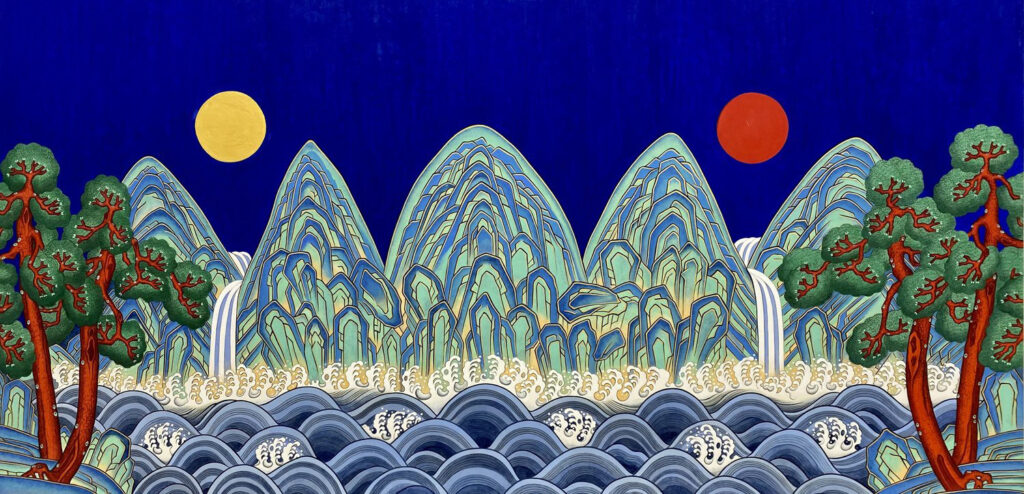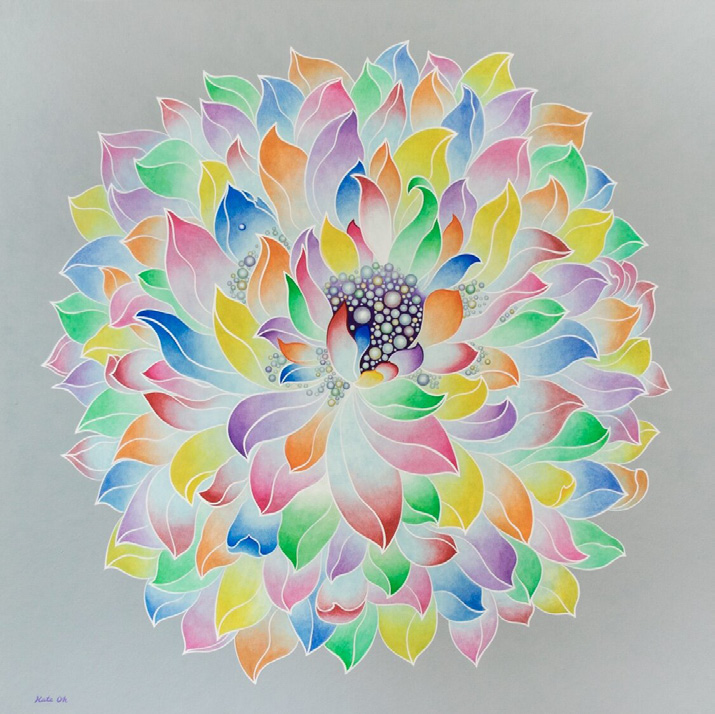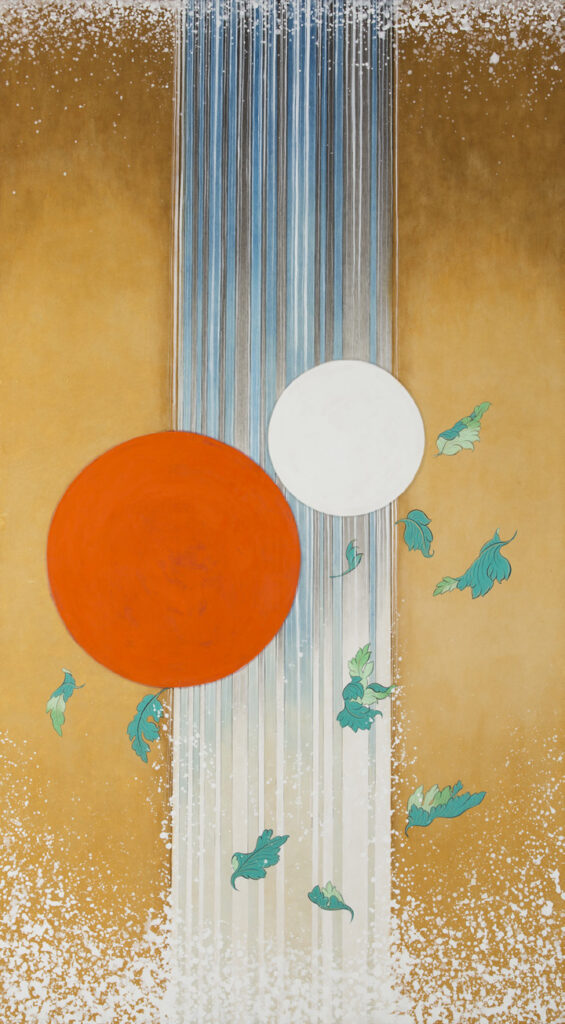
Kate Oh-Trabulsi has been a pillar of the New York art scene for many years. With little fanfare, she has worked tirelessly to spread awareness and appreciation for Korean art and culture. A member of the International Committee of The Federation of Korean Artistic & Cultural Organization, she is currently its Korea-US Honorary Ambassador. She lectures on Korean Folk Traditions at Rutgers University, and she is also a docent at the Metropolitan Museum of Art.
Her base is the Kate Oh Gallery, on the Upper East Side in New York City, where as a gallerist, she promotes Korean, American and international artists. At her core, however, she is an artist.
Kate Oh focuses on the well-established discipline of Minhwa, the Korean form of folk art —otherwise translated as “people’s art”— and merges it elegantly with Western fine art.

Folk art can be defined as art of the people, representing cultural identity and heritage, often created by artisans who apprentice with experienced artisans. There is currently a resurgence of folk art in many regions. It is often characterized as distinct from fine art, which can be described as art created purely for aesthetic value by those who have studied earlier forms of art. There are obviously no clear-cut definitions that adequately distinguish these two forms of art, and since the
20th century, the lines have further blurred, overlapped and spilled over any earlier designated boundaries.
Oh was born in South Korea to an artistic family who encouraged her to pursue ballet instead of fine arts, due to the concern of low pay for fine artists in the country. Despite this, Oh drew whenever she could, even using blank sections of the local newspaper as her canvas. As a young adult, Oh moved to New York City aiming to attend Juilliard for ballet. Away from the pressures of her family, she instead attended Parsons to study for a bachelor’s and master’s in fine arts, which had always been her first love.
After graduating, for a while she ran a commercial printing company that reproduced arts on canvas. In her spare time, she visited museums and galleries, including the Metropolitan Museum of Art, to study original works. There she found herself drawn to Korean traditional art. Far from her home country, she realized that she wanted to learn and master the traditions and skills of Minhwa.
Minhwa became popular during the 17-19th centuries, the latter part of the Joseon (Chosŏn) period. During this time, Korea enjoyed 200 years of peace after decades of wars with Japan and Manchuria. It was a time when the merchant and middle classes flourished and were able to afford art in their lives. The art included mythology and religion as well as aspects of everyday life with emphasis on celebrations and encouraging good luck, health and fortune. Caricatures and humor were also regularly found in Minhwa, which if not in black and white, were usually boldly colorful.

Much of Minhwa was created by anonymous artisans, often travelling around the country, so their provenance is unknown, even those whose work reached the aristocracy and ruling classes. It is only today, as the modern-day equivalent of Minhwa sees another resurgence, that we are being introduced to the artists, their motivations and intentions.
Oh’s work often includes traditionally important motifs. Lotus flowers symbolize purity of soul and sanctity, the fully open flower denotes enlightenment while a closed or half open flower denotes progression towards enlightenment. The moon in Korean culture symbolizes prosperity and good fortune and a full moon is a symbol of life and the passage of time. The sun symbolizes immortality and is also one of the ten symbols of longevity which also includes clouds, mountains, water, pine trees, turtles, deer, cranes, peaches, and the herb of eternal youth, all of which are found in Minhwa. These traditional designs are recreated by Oh in an elegant and clean style with Western nuances and colors. The lightness and grace of classical ballet that she studied for so long may be at the heart of this refined style.
True Minhwa or folk art needs to keep evolving and not be just a replication of old images. The art needs to reflect current day values and sensibilities. It needs to be contemporary art in order to be authentic. Kate Oh’s work breathes life into this genre, by reflecting the views of a Korean native living abroad; coalescing her Korean essence with a modern New York vibe. G&S





Leave a Comment